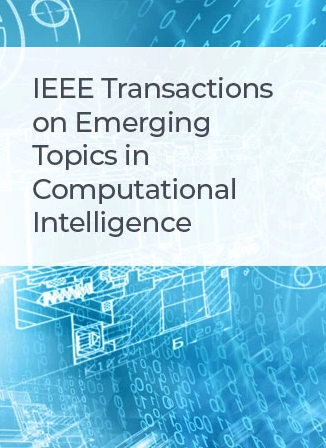ESAI: Efficient Split Artificial Intelligence via Early Exiting Using Neural Architecture Search
IF 5.3
3区 计算机科学
Q1 COMPUTER SCIENCE, ARTIFICIAL INTELLIGENCE
IEEE Transactions on Emerging Topics in Computational Intelligence
Pub Date : 2025-01-01
DOI:10.1109/TETCI.2024.3485677
引用次数: 0
Abstract
Deep neural networks have demonstrated superior performance in various computer vision tasks compared to traditional machine learning algorithms. However, deploying these models on resource-constrained mobile and IoT devices poses computational challenges. Many devices resort to cloud computing, where complex deep learning models analyze data on servers. This approach increases communication costs and hampers system efficiency in the absence of a network connection. In this paper, we introduce a novel framework for deploying deep neural networks on IoT devices. This framework leverages both cloud and on-device models by extracting meta-information from each sample's classification result. It assesses the classification's performance to determine whether sending the sample to the server is necessary. Extensive experiments on CIFAR10 and CINIC10 datasets reveal that only 45% of CIFAR10 and 60% of CINIC10 test data need to be transmitted to the server using this technique. The overall accuracy of the framework is 94% and 89%, respectively, enhancing the accuracy of both client and server models.ESAI:基于神经架构搜索的高效拆分人工智能
与传统的机器学习算法相比,深度神经网络在各种计算机视觉任务中表现出了优越的性能。然而,在资源受限的移动和物联网设备上部署这些模型会带来计算挑战。许多设备求助于云计算,在云计算中,复杂的深度学习模型分析服务器上的数据。这种方法增加了通信成本,并在没有网络连接的情况下妨碍了系统效率。在本文中,我们介绍了一个用于在物联网设备上部署深度神经网络的新框架。该框架通过从每个样本的分类结果中提取元信息来利用云和设备上的模型。它会评估分类的性能,以确定是否有必要将样本发送到服务器。在CIFAR10和CINIC10数据集上的大量实验表明,使用该技术仅需要将45%的CIFAR10和60%的CINIC10测试数据传输到服务器。该框架的总体准确率分别为94%和89%,提高了客户端和服务器模型的准确性。
本文章由计算机程序翻译,如有差异,请以英文原文为准。
求助全文
约1分钟内获得全文
求助全文
来源期刊

IEEE Transactions on Emerging Topics in Computational Intelligence
Mathematics-Control and Optimization
CiteScore
10.30
自引率
7.50%
发文量
147
期刊介绍:
The IEEE Transactions on Emerging Topics in Computational Intelligence (TETCI) publishes original articles on emerging aspects of computational intelligence, including theory, applications, and surveys.
TETCI is an electronics only publication. TETCI publishes six issues per year.
Authors are encouraged to submit manuscripts in any emerging topic in computational intelligence, especially nature-inspired computing topics not covered by other IEEE Computational Intelligence Society journals. A few such illustrative examples are glial cell networks, computational neuroscience, Brain Computer Interface, ambient intelligence, non-fuzzy computing with words, artificial life, cultural learning, artificial endocrine networks, social reasoning, artificial hormone networks, computational intelligence for the IoT and Smart-X technologies.
 求助内容:
求助内容: 应助结果提醒方式:
应助结果提醒方式:


